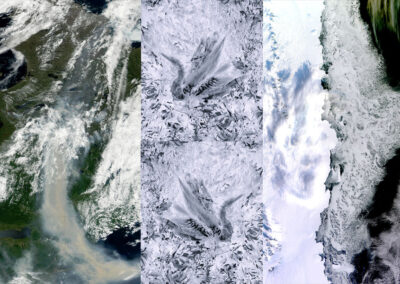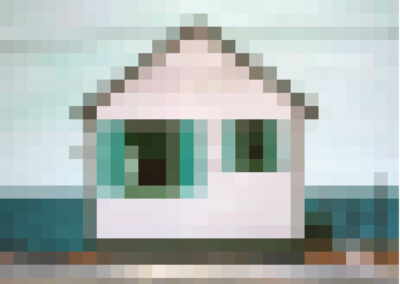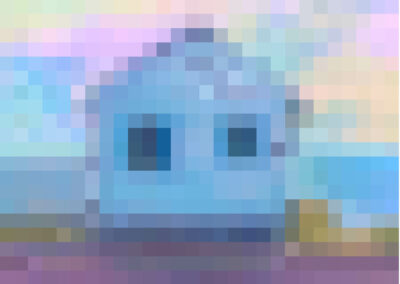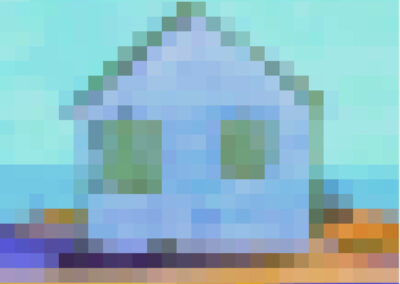
DANIEL RANALLI
DANIEL RANALLI grew up in coastal Connecticut. He has been working as a visual artist for over 40 years. His work is in the permanent collections of over thirty museums here and abroad including the Museum of Modern Art (NY), Museum of Fine Arts Boston, San Francisco Museum of Modern Art, Nelson-Atkins Museum and National Gallery of American Art (Smithsonian). He has been included in over 150 solo and group shows in the U.S. and abroad including the ICA Boston, Harvard Art Museums, Rose Art Museum, Davis Art Museum and the Peabody Essex Museum. Daniel has also been the recipient of two fellowships from the National Endowment for the Arts and multiple fellowships from the Massachusetts Cultural Council.
Although largely situated within the medium of photography, Ranalli’s work can often be characterized as conceptual and/or environmental. The work is frequently rooted in the balance between control and chance – such as the unforeseen results in the photogram, the found scrawls on a classroom chalkboard, the random selection of web searched images or the path of a snail in wet sand.
In 1993 Daniel Ranalli founded the Graduate Program in Arts Administration at Boston University where he taught until 2015. He also wrote extensively on artist issues for several publications in the 1980s and 1990s. Daniel Ranalli lives in Cambridge and Wellfleet, Massachusetts with his wife the artist, Tabitha Vevers.
FIRE-ICE-WATER
DAYS COTTAGES SERIES
Provincetown and the Outer Cape have a long history of painting. The artist’s colony there is over 100 years old, and perhaps the oldest in the U.S. As with such places, there are certain subjects or motifs that are painted many times over the years by many artists. There is also a great deal of similarity in how they are composed and painted.
This series is based on the Day’s Cottages in North Truro. Ranalli used a search engine to look for “Day’s Cottages Paintings” on the Web and reinterpreted those paintings by hyper-pixelating the images. All began as paintings, though some color adjustments were made at times.
PHOTOGRAM SERIES
Photograms are one of the simplest and most elemental forms of photography, using no camera and no negative. Objects are placed on photographic paper in the darkroom – a light source is then turned on for a few seconds – flashing the uncovered paper. Nothing you do reveals itself until the sheet of paper is developed – at which point it is too late to change anything. I wanted to make photographs that were not referencing something outside themselves. I also wanted to make works that looked like they were fabricated with light which is the very genesis of the word photography – photo meaning light and graphy meaning writing. I was also intrigued by the somewhat unpredictable nature of the process. No matter how carefully I prepared the architecture of the piece, the final result always had some element of surprise. Nearly all the work I have done since has embraced chance as an aspect of the work – whether in the Snail Drawings, the Chalkboards or the Tidal Plain Sites.
Archival pigment prints; 24”x36” and 40” x 50” both in editions of five.
ERASURE SERIES
For a number of years I walked the hallways at the end of the day at the university where I taught. I would slip into every unoccupied classroom and photograph the chalkboards. I was fascinated by the layers of activity, energy and meaning in the erasures. There was a gestural abstraction as well as a mysterious pentimento effect.
Archival pigment prints; 30”x30” editions of five.
SNAIL DRAWINGS
This is a series I have been working on for over twenty years on and off. It is based on the drawings made by snails on the wet sand in the inter-tidal zone. I choreograph the snails’ starting positions, and then photograph the marks they make over time. I tend to think of them as a metaphor for the order we seek to establish in our lives, and how the element of chance enters in to shape the result – regardless of how much we attempt to structure it.
Archival pigment prints; 12”x12” image size, 20”x30” sheet size. editions of ten.



















































